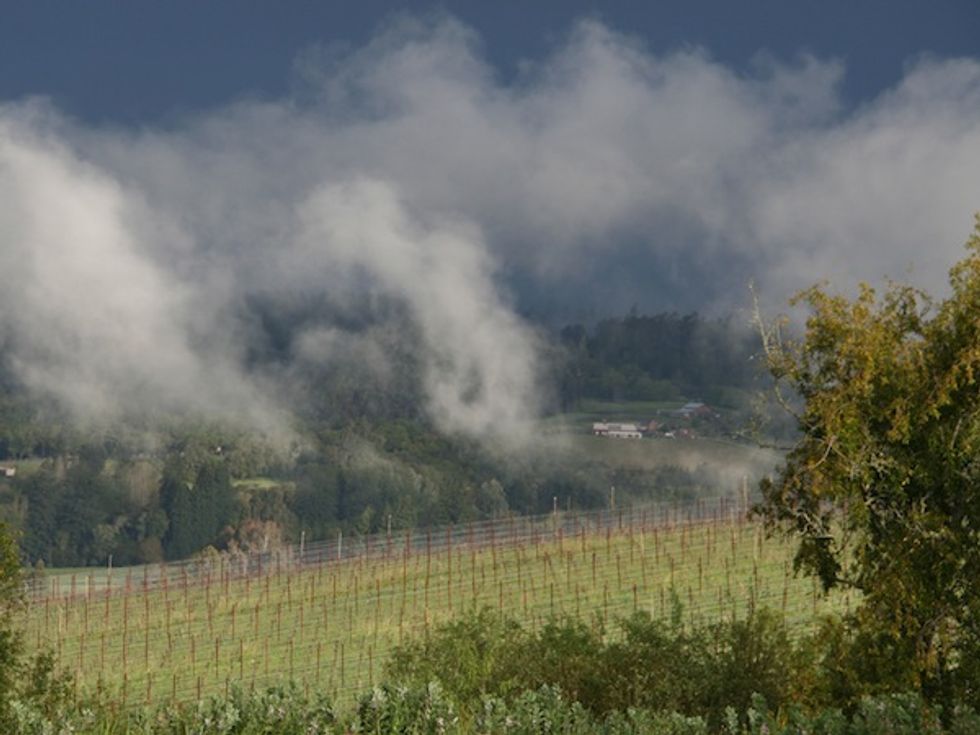Extreme. Treacherous. Dramatic. Unpredictable. These were just a few of the adjectives being thrown around on Saturday afternoon at Sebastopol’s Barlow Center. No, it wasn’t the X Games Sonoma, it was the West of West Wine Festival, and the activity in question was not the Moto X Best Whip–it was grape growing.
But of course when you are dealing with rainforest-like precipitation, constant wind, drip-line chewing coyotes, rocky, acidic soil, and a topography so contoured one grower commented, “I don’t even know what level is,” viticulture does become an extreme sport of sorts.
The Fort Ross-Seaview AVA–which overlooks the Pacific Ocean and includes some of the highest-elevated, most western vineyards in California–is surely one of the most challenging places to grow grapes in the Golden State. And yet, the 27,000 acre region, accessible only by steep, rural roads, is increasingly attracting interest from daring Pinot Noir producers. The reason is, of course, that the wines are well worth the effort.
The term “cool climate Pinot Noir” is often used when speaking of wines from western Sonoma Coast, but as Jon Bonné —who moderated a panel that included two of the area’s best producers, David Hirsch and Lee Martinelli — pointed out, “this is not cool climate agriculture.” Hirsch, who founded Hirsch Vineyards in 1977, says it’s much more complicated: “I don’t think we even have a climate,” he says. “We just have weather.”
Rivers that meander through the 1,500-foot ridges can provide more of a cooling influence than the Pacific Ocean, visibly crashing on the shores far below. And yet evening temperatures can be in the ‘80s. Hirsch refers to one of his ridges as a rainforest, thanks to 60-80 inches of rain during the winter months. The area's coastal winds can also have a “profound” affect on the fruit.
When asked what makes the wine from Fort Ross-Seaview so distinctive — what Bonné describes as brooding minerality, distinct tannin structure, and a coniferous character — Hirsch shakes his head. “There is so much going on, it’s hard to say what is making the difference.”
Wines we recommend from Fort Ross-Seaview:
2010 Martinelli Three Sisters Vineyard Pinot Noir
Ripe red fruits, decaying flowers, and soaring acidity from what Martinelli describes as "an elegant year."
2010 Hirsch Vineyards “San Andreas Fault” Estate Pinot Noir
Hirsch compares this wine to a Burgundian Village-level wine. Composed of the best barrells from all his vineyards, it is floral and perfumey, and tastes of cranberries and dried cherries.
2011 Flowers Camp Meeting Ridge Estate Pinot Noir
Fresh red fruits, firm tannins and a bright, fragile minerality made this the friendliest and most delicate wine of the bunch.
2011 Failla Estate Vineyard Pinot Noir
Most illustrative of the "brooding mineral" character of this region, the wine is as dark and moody as an electrical storm; rich fruit is supported by tannins and acidity.
2010 Wild Hog Vineyard Pinot Noir
A complex, deeply layered wine smelling of dried rose petals, mentholatum and sage with a dark mineral finish.





















